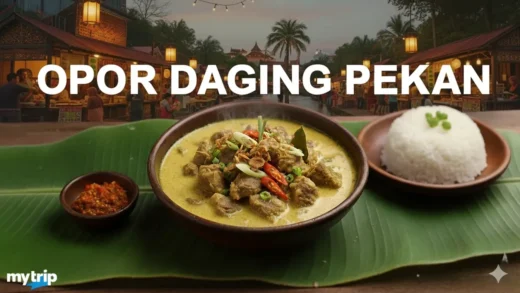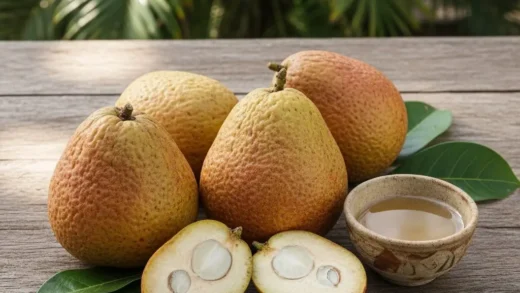Buah Matoa

Introduction
Buah Matoa is steadily gaining recognition across Malaysia and Southeast Asia as a premium fruit that embodies cultural richness, culinary innovation, and modern consumer wellness trends. Known for its glossy exterior and luscious translucent flesh, Matoa delivers a refined sweetness and tropical aroma that appeals to both traditional and contemporary tastes. Once rooted primarily in indigenous communities, the fruit is now transitioning into mainstream markets, premium food retailing, artisanal dessert crafting, and health-based product development. Its rise highlights growing demand for exotic regional produce and positions Buah Matoa as a cultural and commercial symbol within Malaysia’s dynamic agri-food sector.
Origin
Buah Matoa traces its origins to the lush rainforests of Papua and Eastern Indonesia, where it has been cultivated for generations as part of indigenous food heritage. Scientifically identified as Pometia pinnata, the fruit belongs to the Sapindaceae family alongside rambutan, longan, and lychee. Its spread across Sulawesi, Maluku, Borneo, and eventually Malaysia was driven by traditional trade, maritime exchanges, and local agricultural adoption. Today, Matoa plays a strategic role in tropical fruit diversification efforts due to its adaptability, unique flavour profile, and increasing commercial appeal in Southeast Asia.
Category
| Scientific Name | Family | Category | Type (Seasonality) |
|---|---|---|---|
| Pometia pinnata | Sapindaceae | Tropical Tree Fruit | Seasonal (Mid-year peak) |
Appearance
Buah Matoa is characterised by its small, oval shape measuring 2–5 cm in length. The skin ranges from deep green to maroon and remains smooth with a slightly glossy surface. The thin rind cracks easily when pressed, revealing a translucent, jelly-like flesh wrapped around a single seed. Its aesthetic appeal—combining a lychee-like interior with a darker, elegant exterior—makes it a standout fruit in both local markets and premium gifting sets.
Popular Varieties
| Variety | Local Name | Distinctive Features | Region of Prominence |
|---|---|---|---|
| Matoa Kelapa | Matoa “Coconut” | Firm flesh, mild coconut notes | Papua, Sulawesi |
| Matoa Papeda | Matoa “Soft” | Softer jelly-like pulp, sweeter profile | Papua, Maluku Islands |
| Matoa Merah | Red Matoa | Maroon skin, rich sweetness | Eastern Indonesia |
| Matoa Hijau | Green Matoa | Green rind, gentle tanginess | Sabah, Indonesia |
Preparation
- Fresh consumption
- Mixed snacks with nuts or dried fruits
- Desserts such as puddings, jellies, shaved ice, and fruit cocktails
- Indigenous culinary dishes
- Juices, infusions, teas, and smoothies
Equipment
- Paring knife
- Cutting board
- Serving dish
- Airtight container for storage
- Skewers for premium dessert plating
Taste
Buah Matoa offers a sweet, tropical flavour often described as a blend of rambutan and longan with subtle coconut and vanilla undertones. Its moderate sugar level creates a smooth sweetness without sharp acidity, contributing to its refined and well-rounded profile.
Texture
The fruit’s flesh is soft, juicy, and jelly-like, with some varieties offering slightly firmer consistency. Its smooth, high-moisture texture provides a clean and refreshing mouthfeel ideal for chilled desserts and beverages.
Aroma
Matoa’s aroma is gently sweet, resembling floral and vanilla notes. The fragrance enhances its tropical appeal while remaining mild enough for versatile culinary applications.
Cultural Significance
Buah Matoa holds deep cultural value within Papua and indigenous communities of Borneo, serving as a celebratory fruit during harvest seasons and communal gatherings. Its presence reflects abundance, unity, and shared heritage. In Malaysia, the fruit’s growing presence in local markets and premium grocers underscores a renewed interest in indigenous produce, sustainability, and regional biodiversity.
Regional Cultivation
| State/Region | Famous For | Harvest Period |
|---|---|---|
| Sabah | Small-scale orchards, indigenous markets | June–August |
| Sarawak Highlands | Community-based cultivation | July–September |
| Papua | Primary origin and high-volume production | May–August |
| Sulawesi | Diverse varietal offerings | June–August |
Social Context
Buah Matoa is widely enjoyed in pasar tani, roadside stalls, and seasonal fruit bazaars. Rural communities consume it communally in bulk during harvest seasons, while urban markets introduce it through premium fruit boxes, boutique grocers, dessert cafés, and wellness-influenced menus. Its visual appeal also makes it popular across social media, further amplifying its contemporary cultural relevance.
Nutritional Information (per 100g)
| Nutrient | Amount |
|---|---|
| Calories | ~70–100 kcal |
| Carbohydrates | 17–22 g |
| Protein | 0.5–1 g |
| Fat | 0.1–0.5 g |
| Fiber | 1–2 g |
| Vitamins | Vitamin C, B-complex |
| Minerals | Potassium, Calcium, Iron |
Health Benefits
- Supports immune function with vitamin C
- Provides natural energy from carbohydrates
- Rich in antioxidants that fight oxidative stress
- Hydrates with high water content
- Supports digestion through dietary fibre
- Low fat, suited for balanced diets
Dietary Restrictions
- Consume in moderation for individuals managing glucose levels
- May cause discomfort for those with sensitive digestion
- Not ideal for low-carb or ketogenic diets due to natural sugars
Allergens
Individuals allergic to fruits in the Sapindaceae family (rambutan, longan, lychee) may experience mild irritation or oral itching. Severe allergic reactions are rare but possible.
Cost
Buah Matoa is priced competitively in Malaysia, generally ranging from RM 18–35 per kg, while premium imported varieties may reach RM 40–55 per kg depending on harvest conditions, demand, and freshness.
Production & Export
Indonesia remains the primary producer of Matoa, exporting steadily to Malaysia, Singapore, China, Australia, and niche European markets. Rising global interest in exotic, nutrient-rich fruits continues to elevate Matoa’s export potential. Malaysia’s adoption of small-scale cultivation further strengthens regional supply, supporting agrotourism, specialty retail, and long-term fruit diversification strategies.
Symbolism
Buah Matoa symbolises heritage, prosperity, authenticity, and unity. Its prominence in cultural gatherings reflects abundance and generosity, while its growing relevance in modern markets signifies a balanced fusion of tradition and innovation.








Comments are closed.